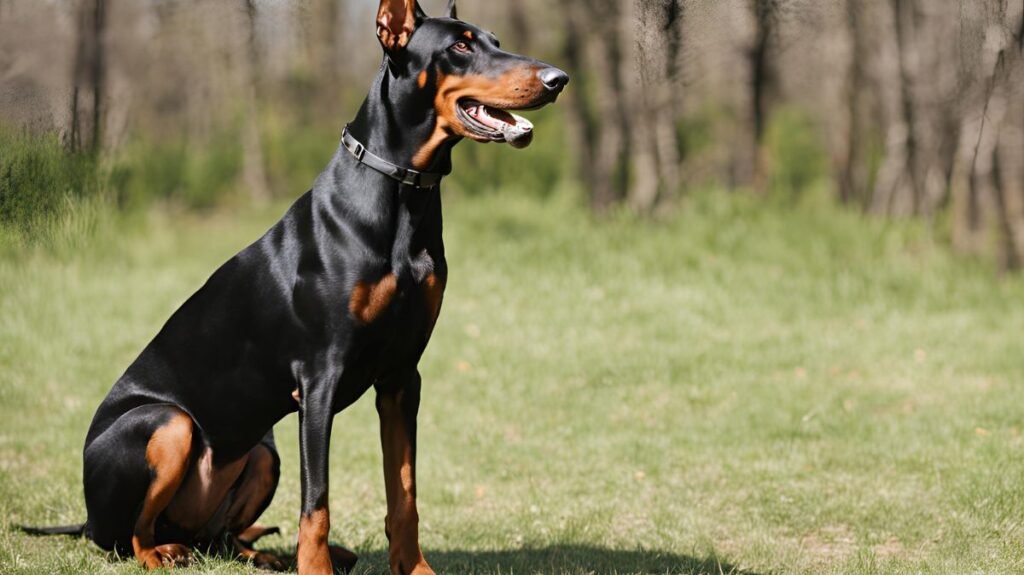Training a Doberman Pinscher is both a rewarding and a challenging task. Known for their intelligence and loyalty, Dobermans require proper guidance to harness their instincts and become well-mannered companions. This guide will delve into proven techniques and tips to effectively train your Doberman Pinscher, addressing various aspects of their behavior and training requirements.

Key Takeaways
| Aspect | Summary |
|---|---|
| Temperament | Intelligent, Loyal, and Protective |
| Training Approach | Uses Positive Reinforcement and Consistent Training |
| Challenges | Socialization and Obedience |

The Nature and Temperament of Doberman Pinschers
Dobermans are known for their intelligence, loyalty, and protective nature. Understanding these natural traits is crucial when embarking on a training journey. Their natural instincts can be both advantageous and challenging, making it important to approach training with patience and consistency.
Importance of Temperament Understanding
Training should always take into account the temperament of the dog. Dobermans require structure and leadership to thrive, which helps build trust and respect between the dog and the owner.
Traits to Consider
- Intelligent and Protective
- High Energy Levels
- Eagerness to Please
Essential Training Supplies and Environment
Successful training hinges on having the right tools and environment. Here’s a concise list of the must-have training supplies:
- Collar and Leash
- Training Treats
- Clickers and Toys
- Training Mats
Creating a conducive training environment is equally essential. It should be free from distractions and spacious enough for various activities. A well-chosen training spot helps the dog focus and promotes effective learning.
Starting with Socialization
Socialization is vital for Dobermans to develop well-rounded characteristics. It helps them become comfortable around other animals and people, reducing aggression and fear.
Early Socialization Steps:
- Introduce your Doberman to different environments.
- Encourage interaction with other dogs and humans.
- Use toys and treats to foster positive experiences.

Basic Obedience Training Commands
Teaching basic commands is the foundation of obedience training. Commands such as sit, stay, and come are essential in establishing effective communication with your Doberman.
Step-by-Step Guide
- Command ‘Sit’: Hold a treat, move it above their nose, and wait for them to sit.
- Command ‘Stay’: Once seated, slowly step back while saying “stay.”
- Command ‘Come’: Use a leash and gently pull, encouraging them to come towards you.
Implementing Positive Reinforcement Techniques
Positive reinforcement is a highly recommended training method due to its effectiveness in reinforcing desirable behavior. Use treats, praises, and affection to reward your Doberman for good behavior and commands executed correctly.
Reinforcement Tools
- Food Treats
- Verbal Praise
- Playtime
Addressing Common Training Challenges
Training a Doberman isn’t without challenges. Some common issues include distraction, stubbornness, and occasionally, aggression. To overcome these:
- Remain Consistent with training sessions.
- Practice Patience and maintain a calm demeanor.
- Introduce Variety to keep the Doberman engaged.

Advanced Training Techniques for Dobermans
Once basic obedience is rooted, introducing advanced training commands is beneficial. This includes agility training, advanced tricks, and task-oriented commands which can help harness their intelligence positively.
Advanced Training Suggestions:
- Agility Courses
- Fetch and Retrieve
- Scent Work
Leash Training and Outdoor Learning
Leash training is pivotal for ensuring your Doberman behaves during outdoor excursions. Use short, incremental sessions to teach leash skills, gradually extending to longer walks.
Outdoor Learning Benefits
- Enhances Focus and reduces distractions.
- Promotes Exercise and a healthy lifestyle.
- Facilitates Real-world Command Practice

Consistency and Training Schedule
Consistency is the cornerstone of effective training. Establish a schedule tailored to your Doberman’s needs, ensuring regular training sessions that align with their energy levels.
Sample Training Schedule:
- Morning Walk & Training: 7:30 AM – 8:00 AM
- Midday Obedience Session: 1:00 PM – 1:30 PM
- Evening Play & Advanced Training: 6:00 PM – 7:00 PM
Monitoring Progress and Adjusting Methods
Regularly review your Doberman’s progress, adjusting methods as necessary to cater to their learning pace. This will ensure continuous improvement and keep training both effective and enjoyable.
Tips for Monitoring and Adjustment:
- Maintain a Training Log
- Celebrate Small Wins
- Adapt Techniques as your dog matures
Conclusion: The Path to a Well-Trained Doberman
Training a Doberman Pinscher demands commitment and understanding of their unique traits. With structured approaches and patience, you can transform your Doberman into a disciplined and loving companion, reflecting the true potential of this remarkable breed.

FAQ
What age should I start training my Doberman?
Begin training as early as possible, ideally between 8 to 10 weeks.
How do I handle a stubborn Doberman?
Use positive reinforcement, stay consistent, and maintain patience for the best results.




